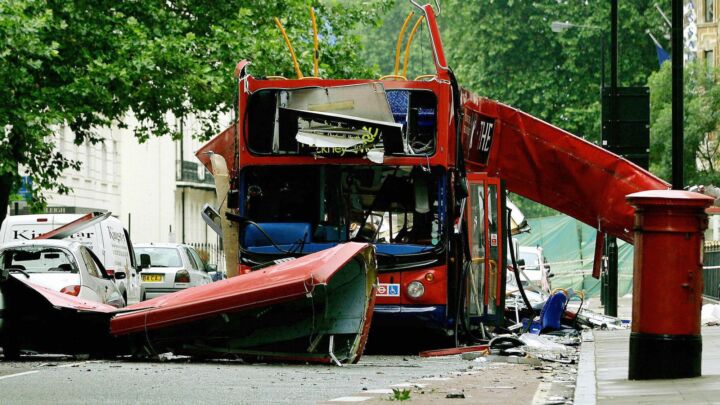The smiling Brummie girl is no radical icon
This is a cynical media image, not a revolution.

Want to read spiked ad-free? Become a spiked supporter.
Here’s a tip for radicals. If your protesting is fawned over by Trumpite oaf Peirs Morgan, and rapturously applauded by the painfully square Guardian, and cheered by Labour MP and darling of the Twitterati Jess Phillips — who’s never done anything edgier than tell Diane Abbott to fuck off — then you’re doing something wrong. Really wrong.
It’s like the time in 2010 when parents were dropping their kids off at protests against government cuts. Or when Plan B’s terrible protest song about the London riots was launched at an event organised by the Observer. No. Stop it. These people shouldn’t like what you’re doing. It’s time for a rethink.
And so it is with Saffiyah Khan, the young Birmingham woman who went insanely viral over the weekend after she was snapped smiling bemusedly at English Defence League protesters who were shouting at a woman in a hijab. Khan stepped between the EDL blokes and the woman in the hijab, which is a very nice thing to have done, and then a photographer captured her looking with a combo of haughtiness and humour at a grimacing EDLer.
But it’s what happened next that is extraordinary. The image of Khan’s fuck-you smile was shared hundreds of thousands of times. Morgan and Phillips and others went wild for it. The Guardian is treating Khan as a Brummie incarnation of Rosa Parks. Even tabloids — the Sun, the Mirror, Metro (which is basically Twitterati guff printed off for yawning morning commuters) — went in for some Khanmaina. She’s being hailed as a role model, an icon, a symbol of defiance against the new fascism, a living, breathing monument to the ‘possibility and dignity of resistance’, as one of the Guardian’s 7,000 articles about her put it. A statue can’t be far off.
I hope I will not detract from Khan’s friendly, comradely gesture in defence of the woman in the hijab when I say that this beatification of her, this transformation of her into a symbol of everything that is good about Britain, is utterly mad.
A smile in the heat of a protest does not an icon make. It surely takes more to be a role model than to be in the right place at the right millisecond as a photographer desperately scouts for an image that will press the Twitterati’s buttons and earn him a few bob from the broadsheets?
Khan’s photo is now being shared by tweeters and media people alongside other ‘women who don’t give a shit’ — not giving a shit is the big thing in 2017, apparently — including a girl in Belfast in the 1970s staring down British soldiers and a black civil-rights protester (Gloria Richardson) pushing aside the bayonet of a national guard. No, I’m sorry, but mocking the widely mocked EDL to the effusive cheering of the political class and media class is not remotely comparable to fighting for black civil rights in the US in the 1960s or running afoul of the British military in Ireland in the 1970s. It’s not as dangerous, not as radical, not as interesting, and not as historic. Not nearly. Not even close.
Where black American women who confronted the national guard and Irish women who took to the streets against British soldiers or RUC men risked their reputation, safety and even their lives, Khan risked precisely nothing when she stood up to that EDL twit. As the media canonisation of her proves. She is wrapped head to toe in the safety of respectability; she lives in the bubble-wrap of establishment love.
This is the most striking, and worrying, thing about the iconography of Khan: what it reveals about the media’s stranglehold over the culture of protest in the 21st century. It shows that the media now effectively control the language and imagery of protest, deciding, almost unilaterally, which protesting is good and which is bad.
From the spectacular conformism with which the media agreed that the Occupy movement was wonderful to the Observer-sponsored launch of protest songs to newspapers’ capture and dissemination of instantly iconic images of BLM protesters standing up to American cops, the media are now the official guardians of protest culture, the anointers of radicalism.
It’s remarkable that the very same people who normally complain about the media’s cultivation of hackneyed or prejudiced images — whether it’s of female celebs in swimsuits or leading politicians in short skirts — have lapped up the media-created image of a Brummie protester as symbolic of the lingering goodness of Britain in this era of weirdness and flux and Brexit etc. The feminists, tweeters and columnists who often rage against media imagery that promotes a certain body shape or lifestyle have bought into the media concoction that is Khan the Great with the kind of wide-eyed gullibility they usually spy in tabloid readers.
The more protest and its language and its icons come to be refracted through the media, and ultimately shaped and narrated by the media, the less independent they will be, and the more protesters will need to conform to the polite, petty prejudices of the middle classes who make up the media set. This is bad for proper radicalism. The true task of those who want to be genuinely radical today is surely to be media-unfriendly. Never, but never, allow yourself to be gushed over in a Guardian editorial.
Brendan O’Neill is editor of spiked.
Who funds spiked? You do
We are funded by you. And in this era of cancel culture and advertiser boycotts, we rely on your donations more than ever. Seventy per cent of our revenue comes from our readers’ donations – the vast majority giving just £5 per month. If you make a regular donation – of £5 a month or £50 a year – you can become a and enjoy:
–Ad-free reading
–Exclusive events
–Access to our comments section
It’s the best way to keep spiked going – and growing. Thank you!










Comments
Want to join the conversation?
Only spiked supporters and patrons, who donate regularly to us, can comment on our articles.